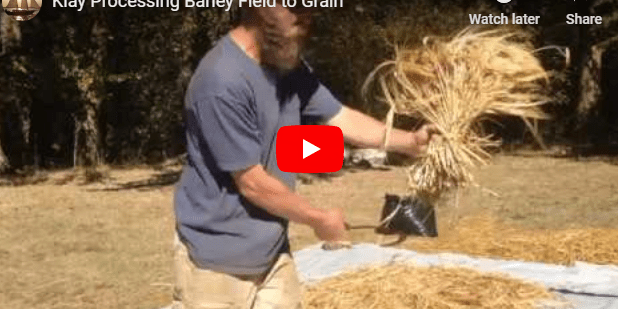Your cart is currently empty!

Barley Offering Prepared Despite Coronavirus Limitations
On Thursday night, while most Jews were cleaning up from their Passover seder, a group went out to a field to harvest the barley to be used in the Omer wave offering. Normally, this reenactment of the Biblical commandment is performed with all the trappings: kohanim in their Biblically mandated garb and all of the proper vessels used in a public ceremony that attracts hundreds. But this year, due to Health Ministry restrictions due to the pandemic, the ceremony was performed in a much more subdued manner.
Rabbi Aharon Yitzchak Stern was tasked by the Sanhedrin with carrying out the ceremony. Normally, the harvest of the barley on the night after Passover is a joyous activity with entire families attending. The event on Thursday night was much more subdued with less than ten people harvesting a small amount of barley in a field adjacent to Kibbutz Ruhama in the Negev, observing social distancing guidelines.
In previous years, the sheaves of grain were brought to Jerusalem where it was beaten, the chaff removed, and sifted through 13 sieves. This was not possible due to restrictions so the grain was brought to a yeshiva (Torah learning institution) in Bnei Brak that is currently not operating. There, the grains were roasted and ground into a coarse meal. Olive oil, specially prepared for temple use, was added. Kohanim from the neighborhood accepted the offering but they were not wearing the Biblically mandated garb nor did they have access to the vessels that have been prepared for the actual ceremony. A shofar was sounded to signal the performance of this part of the commandment.
“We did the best we could and what we were able to do was as close to the Biblical commandment as possible,” Rabbi Steren told Breaking Israel News. “It is a pity the government prevented us from performing the complete ritual on the Temple Mount which is currently empty.”
As Passover ended, Jews began counting 50 days until the holiday of Shavuot, when two loaves made from the barley were brought to the Temple as an offering.
The Bible commands Jews to bring two loaves of bread on Shavuot to the Temple. Made from the choicest wheat, which was ground and sifted twelve times before being baked, it was brought as a thanksgiving “wave offering” along with two lambs, as a central aspect of the national holiday.
Ye shall bring out of your habitations two wave loaves of two tenth deals; they shall be of fine flour; they shall be baken with leaven; they are the firstfruits unto Hashem. Leviticus 23:17
The Sanhedrin is preparing for the possibility that they will be permitted to bring the Shavuot omer offering on the Temple Mount. They are also preparing for the possibility that the Pesach sheni (second Passover) ritual, in effect a second chance to bring the Passover offering, will be allowed next month.
Source: Israel in the News
